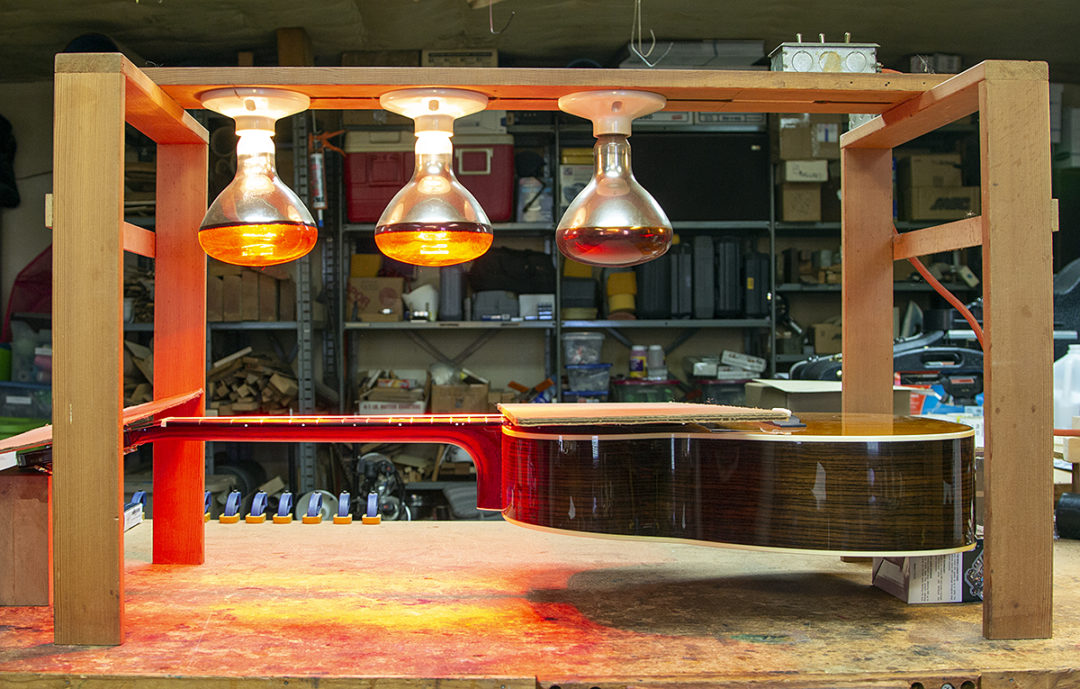
(Mark Lacey is an instructor at Guitar Craft Academy Nashville and the owner of Lacey Guitars.)
What Causes a Guitar Neck to Back Bow?
Ideally, a guitar neck should have a small amount of forward relief, approximately 0.008 inch, so that the strings won’t buzz on the frets. Back bow usually occurs when either the neck has had a refret and the new frets are too tight in the fret slots, which is more prevalent on ebony fingerboards, or on a new build when water-based glue was used to glue on the fingerboard. Some guitars have a two-way truss rod which may correct the back bow, but a single truss rod will only correct for forward bow.
Fixing a Back Bowed Guitar Neck
A back bow can usually be corrected with the aid of 250-watt heat lamps. The heat lamps are positioned about 6 to 7 inches above the fingerboard surface. I made up a fixture specifically to do this type of repair. One simply needs to heat the fingerboard surface for about 20 minutes with the stings tuned to pitch. The heat will soften the glue between the fingerboard and the neck and at the same time allow the neck to bend forward.
Care must be taken to not overheat the neck. The headstock and body should also be protected from the heat with the aid of corrugated cardboard. I test the amount of heat by touching the back of the neck with the back of my hand to determine if it is getting too warm.
Pay attention to how the neck is pulling forward, if you see that the neck is pulling more on the bass side, it means the neck is twisting. To alleviate this, loosen the strings on the bass side a little. Once you observe that the neck has sufficiently pulled forward under the tension from the strings, turn off the heat and allow the neck to completely cool. You should now be able to re-adjust the truss rod so that the neck has the correct amount of forward bow.
Sometimes, it will be necessary to re-level and crown and polish the frets afterward.
I have performed this method on many guitars with complete success.
